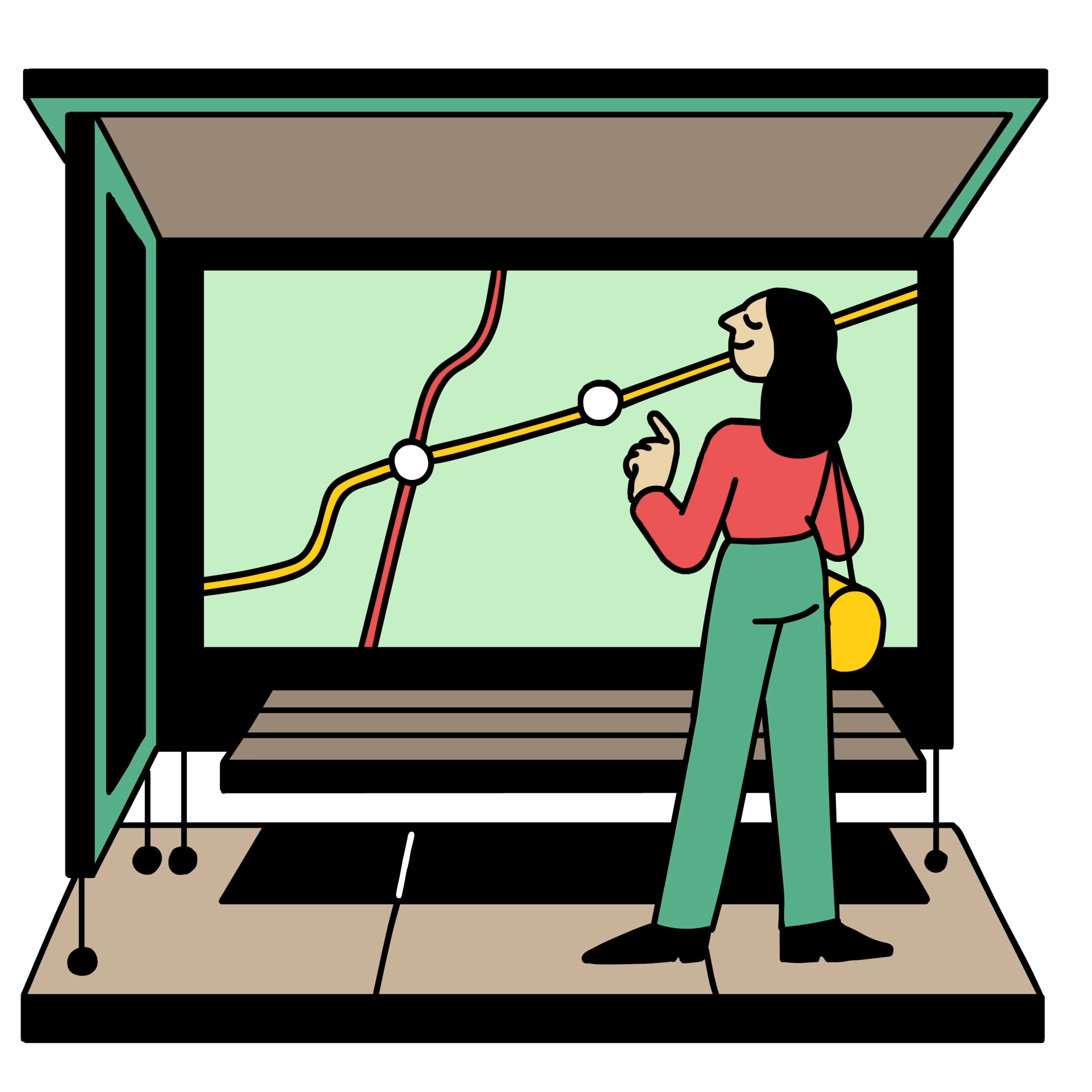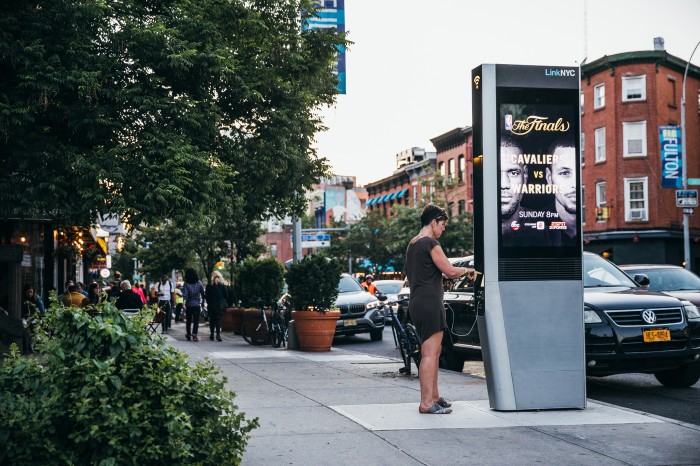The Startup Behind NYC’s Plan to Replace Phone Booths with 7,500 Connected Kiosks

If you live in a big city, you’ve probably experienced the frustration of rushing to the subway only to realize—eventually—that it’s delayed and you would have been better off walking or taking the bus. What if there were digital screens mounted on street corners that warned you the subway was running late and directed you to other forms of transportation? And what if those screens also notified you of community events, listed daily pollution levels, and solicited your opinion on local government initiatives?
Such a scenario may soon be reality in London and New York. Both cities are replacing outdated phone booths with Wi-Fi kiosks that have embedded computing tablets, USB charging ports, keypads for making phone calls, and large screens that display relevant information to passersby. New York, which started installing its “LinkNYC” kiosks in 2016, currently has more than 900 activated across all five boroughs and plans to increase that number to 7,500. The U.K. just started erecting its “InLinkUK” kiosks in London and intends to deploy up to 1,000 across the country.
Today, people use the Links primarily to charge their smartphones, take advantage of the fast Wi-Fi, make Internet (VoIP) calls, and search for information about the weather and local restaurants. All these services are free to use, in part because the 10-foot-tall kiosks display ads that generate funds the cities share with the companies that designed and run the technology. These companies, which include Qualcomm and the telecom giant BT, pay for the Links’ installation and maintenance costs. They have estimated that the city of New York will earn more than half a billion dollars in revenue over 12 years from the LinkNYC partnership.

Link is poised to be far more than an advertising and Wi-Fi network, however. Intersection, the company that manages the Link projects in London and New York, is considering upgrading them to support everything from augmented reality to autonomous vehicles. “Phase One was about making sure we’re offering robust services to people,” says Intersection’s chief innovation officer, Colin O’Donnell. “Now we’re figuring out how we can leverage all the different data sets we have access to and make [this technology] as dynamic and responsive as it can be.”
Intersection’s ambitions bear attention because it is one of the few private firms that large cities have partnered with on high-profile public-information projects—and its digital technology is likely to spread to other major U.S. cities, such as Chicago, San Francisco, and Seattle, where it holds multiyear municipal and transit advertising contracts. (That’s true despite public concern last year that some people were using the LinkNYC kiosks to watch inappropriate videos and blast music. Intersection says it disabled the Internet browser on the kiosks’ tablets in September 2016 and has received very few complaints since.)
Intersection’s vision for the future may also suggest ways that Google parent Alphabet hopes to shape cities through its “urban innovation” subsidiary, Sidewalk Labs. Sidewalk Labs is an investor in Intersection, its CEO is the chairman of Intersection’s board of directors, and the companies share the same Manhattan office. O’Donnell declined to comment on his company’s association with Alphabet beyond saying that he collaborates frequently with Sidewalk Labs on smart-city ideas, with Intersection tackling the more immediate work and Sidewalk Labs focusing on projects that are five or more years out. But it’s easy to see how the companies could sync up on future initiatives.
Since Intersection’s LinkNYC and InLinkUK contracts both run for at least 10 years, O’Donnell has been brainstorming new features that would make the kiosks more useful. For example, the Links could be outfitted with environmental sensors. Intersection worked with Argonne National Laboratory to develop sensors that detect about 30 different pollutants and could negotiate with its city partners to add them to the kiosks.

Each Link also has two built-in cameras, which face in opposite directions, potentially yielding views up and down the street. Right now, these cameras are only used to monitor for vandalism and damage, but if the city granted permission, Intersection could use them to capture a nearly 360° view of each Link’s surroundings. (Intersection says it does not store video for longer than seven days, unless the footage is necessary to investigate an incident. The company also says it does not use facial recognition technology or track people’s movement through the city.) Eventually, information from Intersection’s future sensors could be combined to create real-time data maps that might be useful for emerging technologies such as self-driving cars.
Joseph Chow, an assistant professor of civil and urban engineering at New York University, likes the idea of Intersection using its kiosks as city sensors. He thinks future Links could help facilitate a Department of Transportation project that is researching ways to use roadside infrastructure to communicate information about accidents to cars and other vehicles. “These technologies provide the architecture that smart cities need to operate,” says Chow. “If you use them to collect information about how people are traveling and to detect disruptions, you can react to situations faster and make better decisions.”
Next, Intersection is looking to deploy its digital screens in airports, apartment buildings, and office complexes. O’Donnell says the company has spent “tens of thousands of hours” in airports studying ways that connected displays could guide people from arrival through the security process and to their gates. Intersection has also worked with real estate developers, including New York–based Related Companies, to streamline the way people enter and navigate buildings, move through security, and learn about tenant news and events. Its ultimate goal, says O’Donnell, is to build a “dynamic digital infrastructure across the entire city experience.”
Keep Reading
Most Popular
Large language models can do jaw-dropping things. But nobody knows exactly why.
And that's a problem. Figuring it out is one of the biggest scientific puzzles of our time and a crucial step towards controlling more powerful future models.
How scientists traced a mysterious covid case back to six toilets
When wastewater surveillance turns into a hunt for a single infected individual, the ethics get tricky.
The problem with plug-in hybrids? Their drivers.
Plug-in hybrids are often sold as a transition to EVs, but new data from Europe shows we’re still underestimating the emissions they produce.
Stay connected
Get the latest updates from
MIT Technology Review
Discover special offers, top stories, upcoming events, and more.